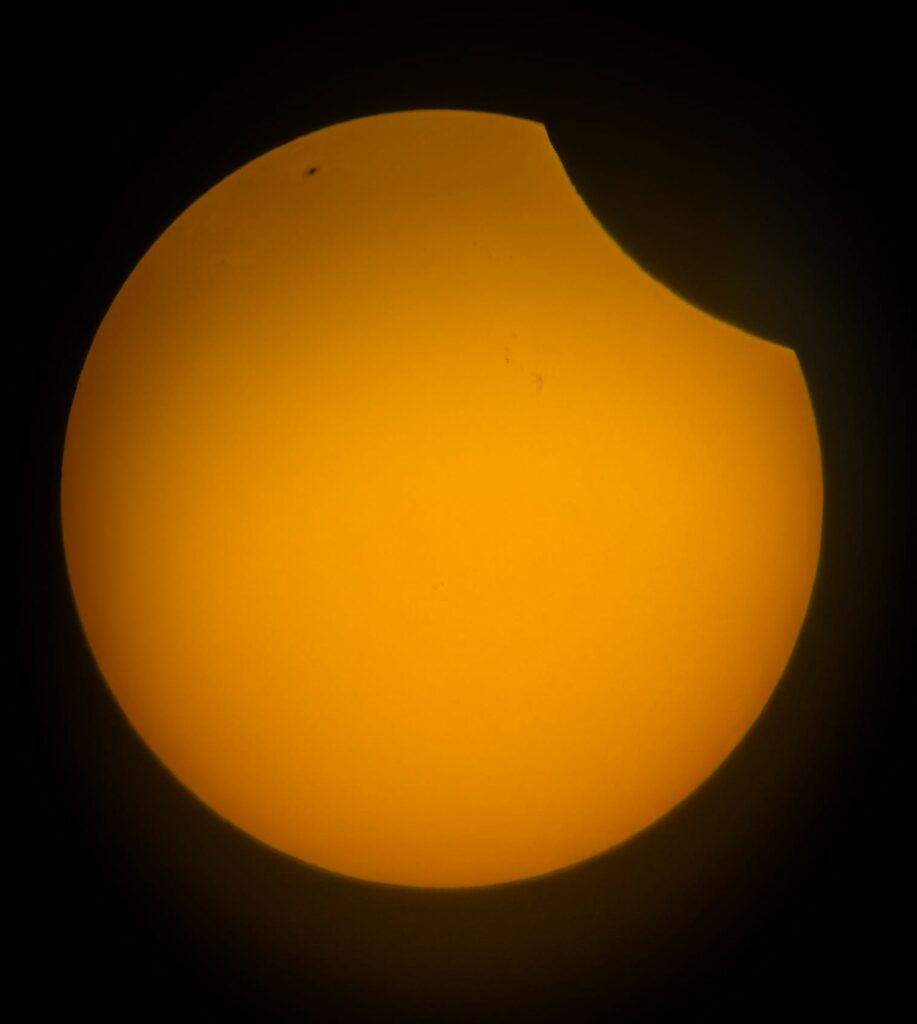Partial solar eclipse 2025
Partial Solar Eclipse – March 28, 2025: A Celestial Display for Astrophotographers
On March 28, 2025, a partial solar eclipse unfolded in the skies over parts of Europe, northern Africa, and western Asia, offering a striking opportunity for both visual observers and astrophotographers. This astronomical event occurred when the Moon partially obscured the Sun’s disk as viewed from Earth, casting a penumbral shadow and producing a distinctive “crescent Sun” appearance at its peak.
This particular eclipse was not a total eclipse — the Moon’s apparent diameter was insufficient to completely cover the Sun — but it nevertheless delivered a captivating display, especially for those equipped with proper solar filters and imaging equipment. Depending on geographic location, observers experienced varying degrees of obscuration, ranging from approximately 15% in southwestern Europe to over 60% in central Asia.

Scientific Background
A solar eclipse occurs when the Moon moves between the Earth and the Sun, temporarily blocking part or all of the solar disk. In a partial eclipse, the alignment is such that only a portion of the Sun is covered. The extent of the eclipse (magnitude and obscuration) depends on the observer’s location within the Moon’s penumbral shadow.
The partial eclipse on March 28, 2025, was part of Saros cycle 149, which consists of 71 eclipses over a span of more than 1,200 years. This particular event was number 21 in the series and occurred near the midpoint of the cycle.
Observing and Imaging the Eclipse
From an astrophotographic perspective, partial solar eclipses present a unique challenge and opportunity. Due to the high dynamic range between the solar photosphere and sky background, precise exposure control and proper solar filtration are essential. Many photographers used dedicated white-light solar filters (such as Baader Astrosolar film), Hydrogen-alpha telescopes, or Herschel wedges to safely capture the event with crisp detail and contrast.
Imaging setups ranged from DSLR cameras mounted on tracking mounts with telephoto lenses, to dedicated solar scopes with monochrome CMOS sensors capturing high-resolution close-ups of the partially obscured solar limb, occasionally enhanced with sunspots and limb granulation.
For time-lapse sequences and eclipse progression montages, consistency in framing and exposure throughout the eclipse phases was crucial. Some observers also employed automated scripts to manage capture intervals and camera settings.
Atmospheric and Environmental Considerations
Clear skies were essential for visibility, and March’s transitional weather patterns posed a challenge in some regions. Observers in central and southeastern Europe enjoyed favorable conditions, while others contended with partial cloud cover. Atmospheric seeing played a secondary role due to the daylight nature of the event, but low solar altitude in some areas required careful planning to avoid obstructions near the horizon.
Conclusion
The partial solar eclipse of March 28, 2025, served as a stunning reminder of the dynamic interactions within our Earth-Moon-Sun system. For the astrophotography community, it was not only a chance to document a fleeting celestial event but also to inspire awe and curiosity among the public through shared images and outreach.
Such eclipses offer excellent opportunities to practice solar imaging techniques and prepare for future total and annular eclipses, where timing, safety, and precision are even more critical. Those who captured this eclipse now have a visual record of a cosmic alignment that, while partial in nature, was fully worthy of appreciation.


